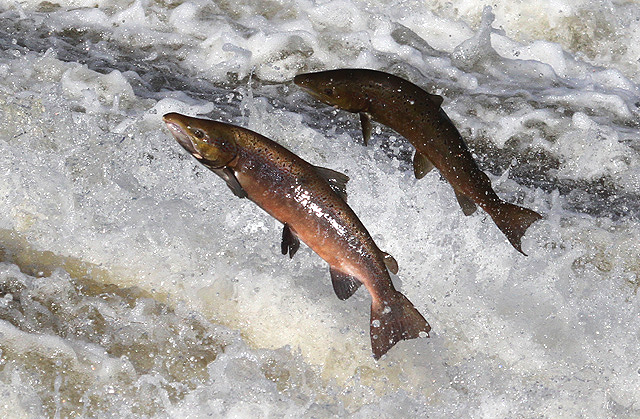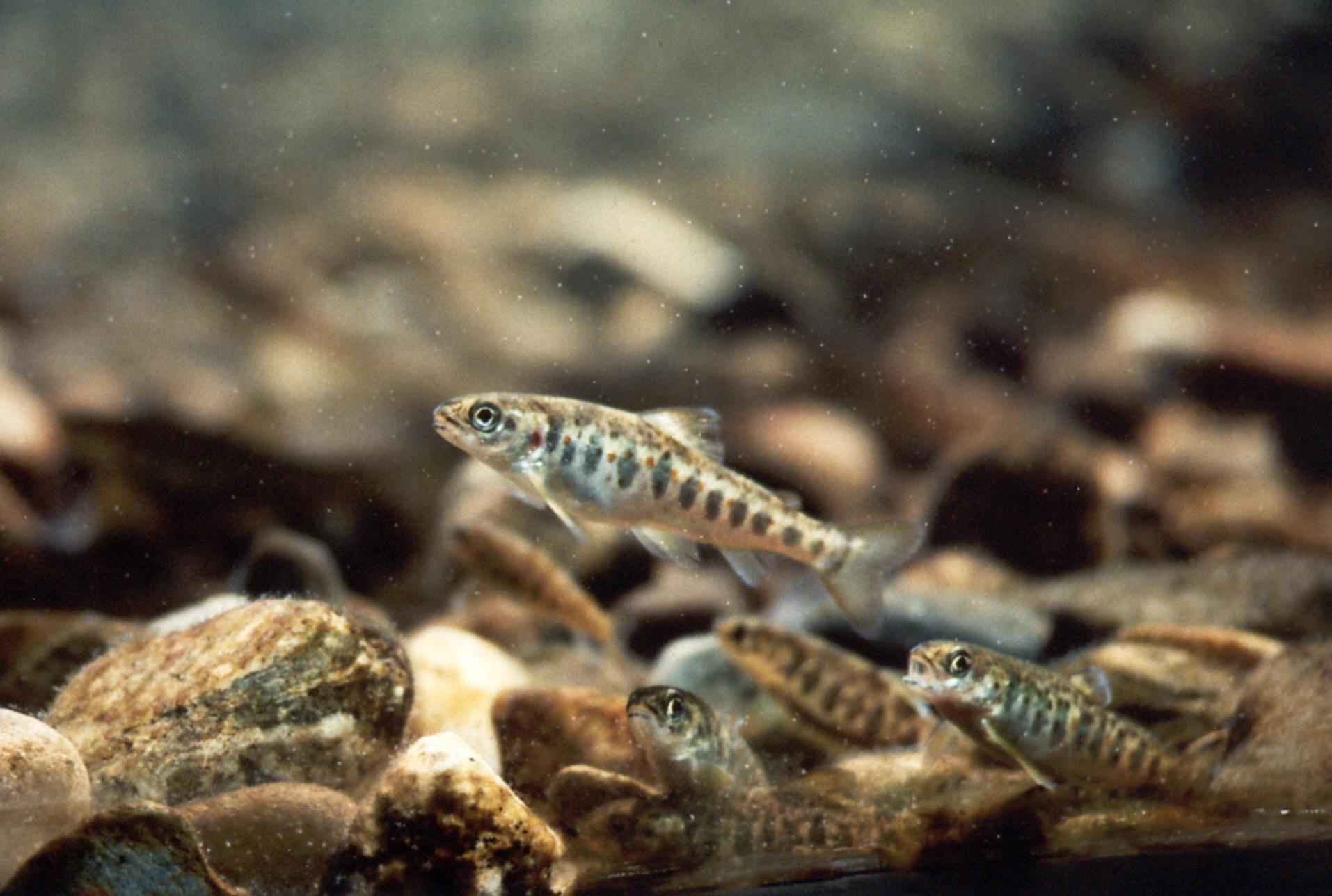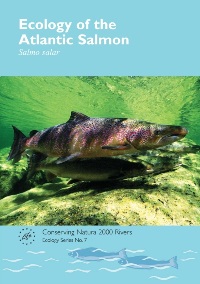Biodiversity
Related Links
- ARKive
- Atlantic Salmon Trust
- Joint Nature Conservation Committee
- Life in UK Rivers: Ecology of the Atlantic Salmon
Latest News
A Starring Role for Nantclwyd’s Lesser Horseshoe Bats
22.05.2015
Living Landscape Brought Back to Life
05.12.2014
More Information
Facebook Page
Atlantic salmon
Prized by anglers and famed for their difficult migration to upstream spawning grounds, Atlantic salmon are good indicators of a healthy environment.
 Description and identification: The Atlantic salmon is a large fish, with males reaching lengths of up to 150cm and females up to 120cm. The adults are silvery-grey with dark spots. During the breeding season they become more colourful, especially the males who also develop a hooked lower jaw.
Description and identification: The Atlantic salmon is a large fish, with males reaching lengths of up to 150cm and females up to 120cm. The adults are silvery-grey with dark spots. During the breeding season they become more colourful, especially the males who also develop a hooked lower jaw.
Habitat: In their marine phase salmon inhabit the open ocean, living at depths of 2-10m. Breeding and development of juveniles takes place in clean, fast-flowing streams and rivers with suitable areas of gravel for spawning.
Diet: The adults feed on a variety of invertebrates and smaller fish. As juveniles they feed on aquatic invertebrates.
 Ecology and reproduction: Salmon start their lives as tiny eggs, which are laid in shallow excavations dug by the female in the gravel of the riverbed. The young salmon grow and develop in the river for several years, finally undergoing changes that allow them to survive in saltwater and making the journey downstream to the sea. Salmon spend between one and four years at sea before returning to the river of their birth to spawn themselves. The migration upstream requires salmon to perform amazing feats of agility and strength, sometimes leaping 3m out of the water to pass obstacles – this is when you are most likely to see them. The ‘salmon run’, as it is known, generally takes place in October and November. Salmon use their sense of smell to find their way back to the river they were born in – sometimes even the same part of that river – with astounding accuracy. After spawning most individuals die, but some survive to spawn in later years. Lifespan is usually between four and six years, but sometimes up to ten.
Ecology and reproduction: Salmon start their lives as tiny eggs, which are laid in shallow excavations dug by the female in the gravel of the riverbed. The young salmon grow and develop in the river for several years, finally undergoing changes that allow them to survive in saltwater and making the journey downstream to the sea. Salmon spend between one and four years at sea before returning to the river of their birth to spawn themselves. The migration upstream requires salmon to perform amazing feats of agility and strength, sometimes leaping 3m out of the water to pass obstacles – this is when you are most likely to see them. The ‘salmon run’, as it is known, generally takes place in October and November. Salmon use their sense of smell to find their way back to the river they were born in – sometimes even the same part of that river – with astounding accuracy. After spawning most individuals die, but some survive to spawn in later years. Lifespan is usually between four and six years, but sometimes up to ten.
Distribution: Atlantic salmon are found in western and northern Europe and in northeast North America. In Britain salmon are found mainly in western and northern rivers, with Scotland being particularly important. In Denbighshire salmon are found in the rivers Dee and Clwyd and their tributaries such as the Alyn.
Threats: Pollution and modification of spawning rivers are major threats to the Atlantic salmon. Physical barriers in rivers such as weirs and dams can prevent migration. Changes in farming practices have led to the degradation of spawning grounds and juvenile habitat. Threats at sea include exploitation by commercial fisheries and the effects of climate change.
Status: This species is protected under UK and European law and is a priority for conservation action at a UK and Wales level. It is a qualifying feature of the River Dee and Bala Lake Special Area of Conservation.




